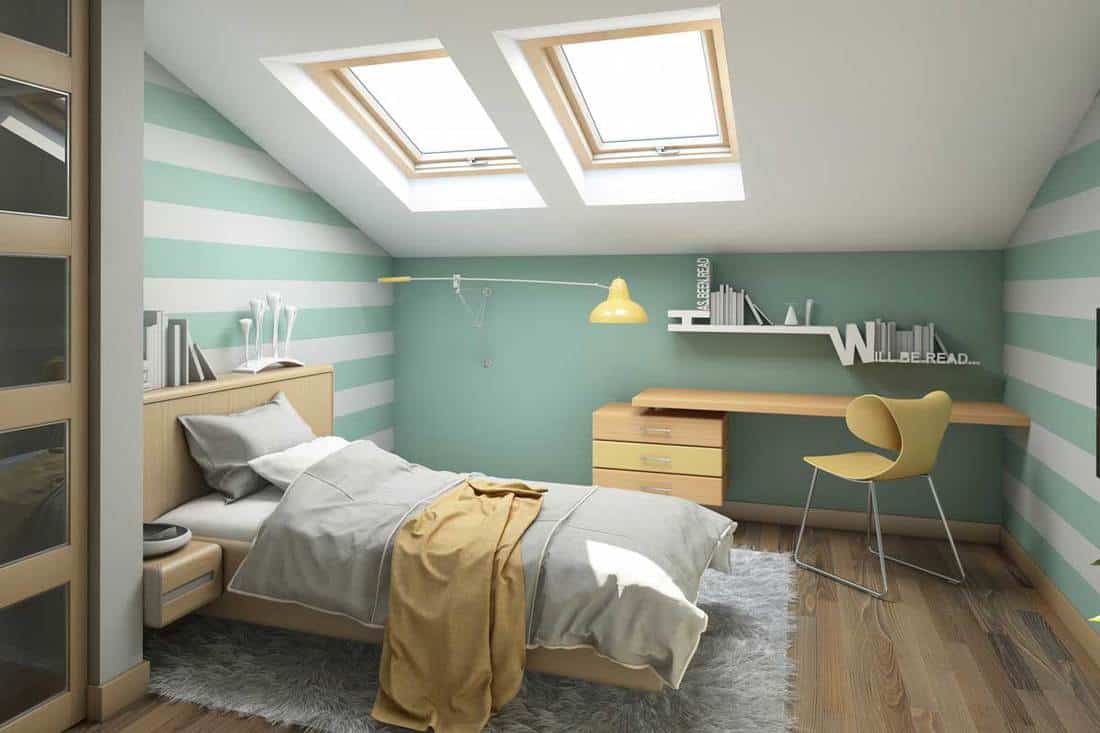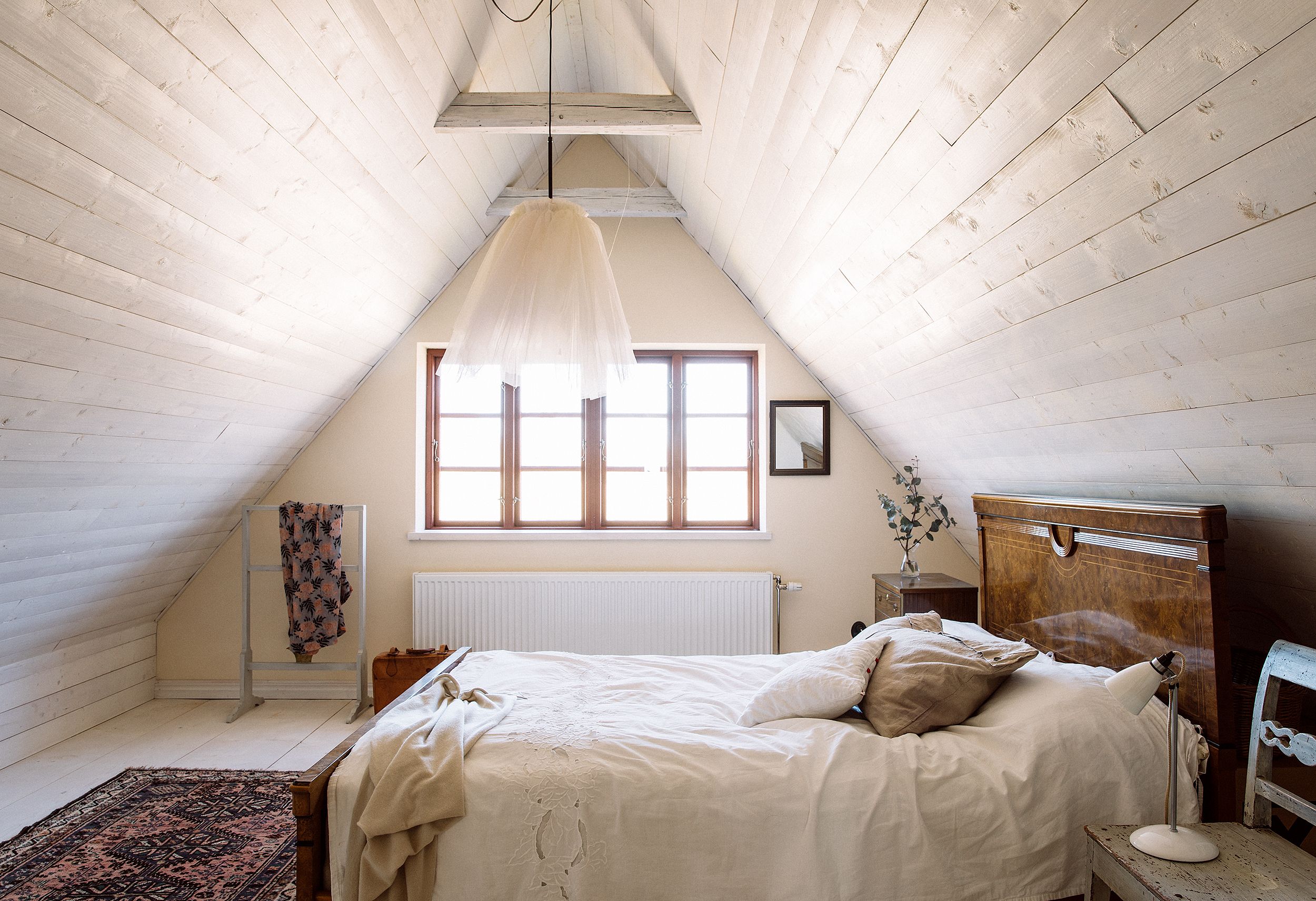Maximizing Space in a Low Ceiling Attic Bedroom

Transforming a low-ceiling attic into a cozy and functional bedroom can be a challenge, but with the right design strategies, it’s achievable. The limited headroom and often-awkward angles can make it feel cramped, but with clever planning, you can create a space that feels open and inviting.
Design Tips for Maximizing Space
Creating a sense of openness in a low-ceiling attic bedroom requires thoughtful design choices.
- Light and Bright Colors: Opt for light, airy colors like white, cream, or pale blues. These colors reflect light, making the space feel larger and more spacious.
- Mirrors: Strategic placement of mirrors can create the illusion of more space. Mirrors reflect light and visually expand the area, making it appear larger.
- Minimalist Decor: Avoid clutter and keep the decor minimal. Too many items can make the space feel crowded.
- Vertical Storage: Utilize vertical space to the maximum. Install shelves, cabinets, and drawers that reach up to the ceiling, maximizing storage without sacrificing floor space.
Furniture Solutions for Low Ceilings, Low ceiling small attic bedroom
Choosing the right furniture is crucial for maximizing space in a low-ceiling attic bedroom.
- Low-Profile Furniture: Opt for furniture with low profiles, like platform beds, low-slung sofas, and chairs with short legs. This will prevent the space from feeling cramped and allow for more headroom.
- Multifunctional Furniture: Choose pieces that serve multiple purposes, such as a bed with built-in storage or a desk that folds down when not in use. This maximizes functionality in a limited space.
- Furniture with Open Legs: Furniture with open legs, like a sofa with a skirt, creates a feeling of lightness and airiness, making the space feel less enclosed.
Using Color and Lighting for Spaciousness
Color and lighting play a significant role in enhancing the feeling of spaciousness.
- Light Colors on Walls and Ceilings: Light colors like white, cream, or pale pastels reflect light and create a sense of openness. Avoid dark colors as they can make the space feel smaller.
- Strategic Lighting: Utilize a combination of ambient, task, and accent lighting. Ambient lighting provides overall illumination, while task lighting is essential for specific areas like reading or working. Accent lighting can highlight features and create a cozy atmosphere.
- Natural Light: Maximize natural light by keeping windows unobstructed. If the attic windows are small, consider adding a skylight to bring in more natural light and brighten the space.
Floor Plan for a Low Ceiling Attic Bedroom
The following floor plan illustrates how to maximize space in a low-ceiling attic bedroom:
[A floor plan image is needed here. It should show a bed placed against the longest wall, a small desk positioned in a corner, a wardrobe with open shelves on one side, and a bedside table with a lamp on the other side. The walking path should be clearly marked. A small rug placed under the bed could add to the design.]
Creating a Cozy and Functional Attic Bedroom

While the low ceiling may present a challenge, it also creates a unique opportunity to design a cozy and inviting space. The enclosed nature of an attic bedroom can evoke a sense of intimacy and tranquility, perfect for a relaxing retreat.
Creating a Comfortable and Relaxing Atmosphere
The low ceiling can be used to your advantage by creating a sense of enclosure and intimacy. The limited space can also encourage a minimalist approach, focusing on essential furniture and decor. This can help to create a calming and relaxing atmosphere.
Cozy Bedding, Lighting, and Décor
- Bedding: Choose soft, plush bedding in calming colors. Consider using a duvet cover with a textured pattern to add visual interest. Layer blankets and throws for added warmth and comfort.
- Lighting: Use soft, warm lighting to create a cozy ambiance. String lights or fairy lights can add a touch of magic. Consider using dimmable lamps and sconces to adjust the mood.
- Décor: Incorporate soft textures and warm colors. Consider using plush rugs, throws, and cushions to add comfort. Add personal touches with framed photos, plants, and artwork.
Creating a Sense of Warmth and Intimacy
- Warm Colors: Opt for warm, earthy tones like beige, brown, and cream. These colors create a sense of warmth and comfort. You can also incorporate pops of color with accent pillows or throws.
- Soft Textures: Use soft fabrics like velvet, chenille, and wool to add a sense of warmth and comfort. Consider adding a plush rug to the floor for a cozy feel underfoot.
- Candlelight: Candlelight is a great way to create a romantic and intimate atmosphere. Choose candles with soothing scents like vanilla, lavender, or sandalwood.
Mood Board Example
Imagine a small attic bedroom with a slanted ceiling painted a soft cream color. A plush, queen-sized bed with a white duvet cover and a few throw pillows in shades of gray and brown sits against the wall. A soft, fluffy rug covers the floor, adding warmth and texture. A bedside table with a lamp and a stack of books sits next to the bed. A small, potted plant adds a touch of greenery. The windows are adorned with sheer curtains that allow soft light to filter in. The overall feeling is one of warmth, comfort, and tranquility.
Addressing Practical Concerns in a Low Ceiling Attic Bedroom: Low Ceiling Small Attic Bedroom

Transforming an attic into a bedroom can be an exciting project, but it comes with practical considerations. While you might be drawn to the charm of a unique space, the challenges of a low ceiling attic bedroom require careful planning and attention to detail.
Addressing Challenges of Access and Usage
A low ceiling attic bedroom often presents unique challenges that need to be addressed. Limited headroom, ventilation, and access can impact the functionality and comfort of the space. It’s important to consider these factors to ensure a safe and enjoyable living experience.
Tips for Dealing with Low Ceiling Attic Bedrooms
- Maximize Vertical Space: Use tall, narrow furniture like wardrobes and bookshelves to maximize vertical space, keeping the room feeling open and airy.
- Consider the Roof Pitch: The slope of the roof will influence the usable space. Choose furniture that fits comfortably within the available space, keeping in mind the angles of the roof.
- Embrace the Slant: Use the sloping walls to create unique storage solutions. Built-in shelves and cabinets along the angled walls can add character and functionality.
- Use Mirrors: Mirrors strategically placed can reflect light and create the illusion of more space, making the room feel larger and brighter.
- Keep the Floor Plan Open: Avoid bulky furniture that can clutter the floor and make the room feel smaller.
Ventilation and Safety in a Low Ceiling Attic Bedroom
- Proper Ventilation: Attic spaces can be prone to heat buildup, making ventilation crucial. Install attic fans or windows for adequate airflow.
- Insulation: Proper insulation helps regulate temperature and prevent heat loss. Ensure sufficient insulation in the attic to maintain a comfortable living environment.
- Fire Safety: Install smoke detectors and fire extinguishers in the attic bedroom, adhering to local fire safety regulations.
- Electrical Safety: Inspect wiring and ensure proper grounding to prevent electrical hazards.
- Escape Route: Ensure a clear escape route in case of an emergency. This might involve having a secondary exit or ensuring easy access to a nearby window.
Essential Items to Consider Before Converting an Attic into a Bedroom
- Structural Integrity: Have a professional assess the attic structure to ensure it can support the weight of a bedroom.
- Code Compliance: Check local building codes and regulations for requirements for attic conversions.
- Headroom: Ensure sufficient headroom throughout the space to avoid bumping your head. A minimum headroom of 7 feet is recommended.
- Window Placement: Adequate natural light is essential. Consider the placement and size of windows to ensure sufficient light and ventilation.
- Heating and Cooling: Plan for a suitable heating and cooling system for the attic bedroom.
- Electrical Wiring: Ensure sufficient electrical outlets and wiring to meet the needs of a bedroom.
- Plumbing: If you plan to add a bathroom, consider plumbing requirements and accessibility.
- Flooring: Choose flooring that is suitable for the attic environment, such as hardwood or engineered wood.
- Budget: Develop a realistic budget for the attic conversion, including materials, labor, and any necessary permits.
A low ceiling small attic bedroom can feel cozy and intimate, but it’s important to choose a color scheme that won’t make the space feel cramped. A calming blue and gray bedroom decor, like the one you can find here , can help to visually expand the space and create a sense of tranquility.
Consider using lighter shades of blue and gray on the walls, and adding pops of color with accent pieces. This will help to make the room feel more spacious and inviting.
A low ceiling small attic bedroom can feel cramped, but a clever paint choice can make a big difference. Consider using midnight blue bedroom paint to create a sense of depth and drama, drawing the eye upwards and making the room feel larger.
This dark hue also has a calming effect, perfect for a cozy attic bedroom retreat.
